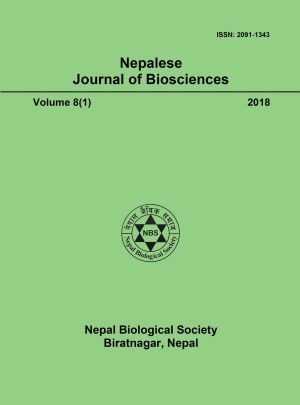Study of human and monkey conflict in Dhankuta Municipality, Dhankuta, Province 1, Nepal
DOI:
https://doi.org/10.3126/njbs.v8i1.51721Keywords:
Catapult, fallow land, growing, maize, Salleri, translocationAbstract
The study was launched in 2017 in Dhankuta Municipality, mid hill region of Nepal. The area has been suffered from monkeys' activities for many years but detail study and management plan of overpopulated monkey have not been made yet. Questionnaire, focus group discussion, key informants survey, direct observation methods were used for collection of data. 45% of respondents observed monkeys group twice a day in their area and 40% of monkeys were from Salleri forest. The finding showed that human threated the monkey and monkey were also disturbing the human. Mostly (71%) was found threats to the monkey from human side. From the side of monkey major problem was crop loss (66%). The maximum victim persons from monkey (40) were adult female. Mostly raided crop was maize (29%) followed by rice (18%). Most of the respondents (35%) revealed that annual loss was US dollar 100 to 150. For the deterrent 52% used catapult. It was found that 38% respondents had left the fallow land due the negative impact of monkey. Most of the respondents (57%) opinioned that the monkeys of that area should be translocated to other places. Some (22%) suggested killing would be the best policy.




